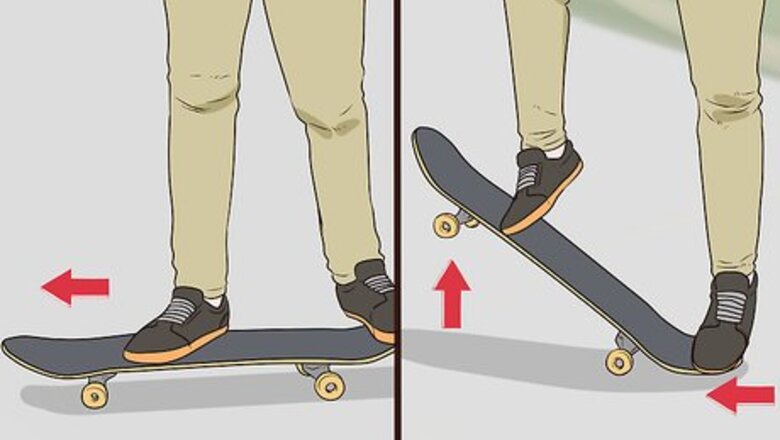
views
Tail Scraping or Jumping Off
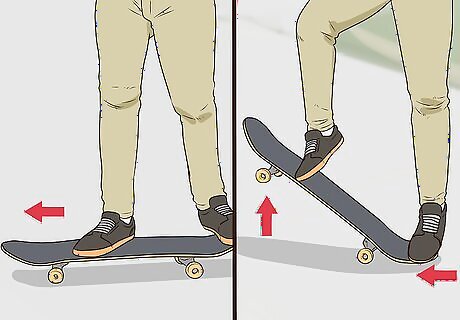
Tail scrape only when going slowly. Tail scraping is a very basic stopping method. When performing it, you can easily lose control of the board without meaning to. Try tail scraping when skateboarding casually on a sidewalk or even ground. Use a more restrained method (like controlled slide stopping) in dangerous situations.
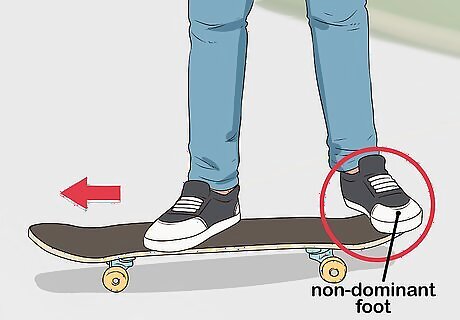
Move your non-dominant foot to the back of the skateboard. Lean forward, and keep your weight on the balls of your feet. Your dominant food should stay near the middle of the skateboard. If you loose balance, lift up your arms to steady yourself.
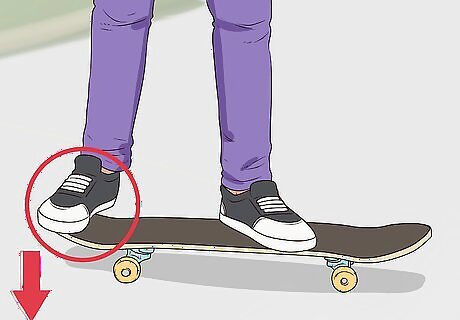
Press the tail with your back foot. Continue applying pressure until it comes in contact with the ground. If you hear a scraping sound, your board is in process of stopping. The friction between your skateboard and the ground will slow your speed. Do not step off the board until you have come to a complete halt.
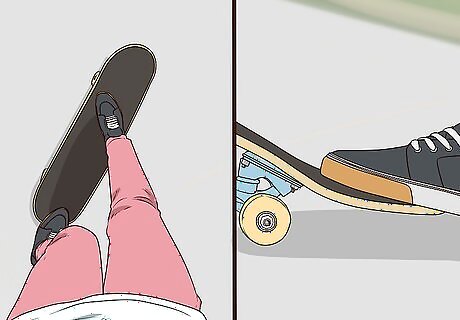
Try the heel scrape as an alternative. Heel scraping mirrors tail scraping in many ways, but your board's tail will not make contact with the ground. Instead, extend your back foot out until your heel is not touching the board. As you press the tail back, stop once your foot has made contact with the ground. Over time, heel scraping can seriously wear on your shoe.
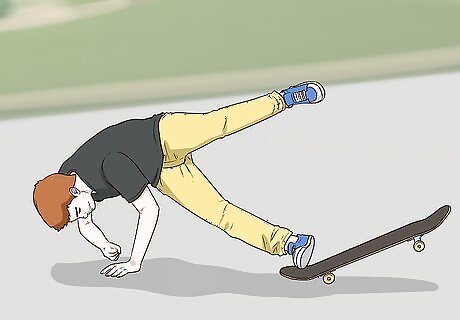
Jump off the board safely if you lose control. Sometimes, your safest option will be to jump off the board. Only do so in case of emergency, and make sure you jump with the right technique. Keep your arms and legs loose to absorb the fall, and curl into a roll as you hit the ground. Practice falling into a roll a few times on the grass to sharpen your technique in emergencies. Avoid the urge to "catch yourself" with your arms, as you could harm your wrists. In general, you should practice getting on and off before you start riding at high speeds. You can do this on grass or another surface that's more forgiving than cement.
Braking with Your Foot
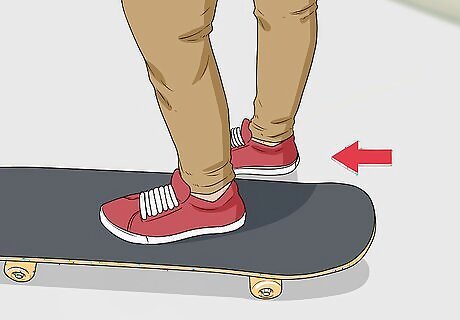
Footbrake when you're skating on level ground. Do not footbrake as an emergency stop or if you're going downhill. This method is only useful for casual skating on level ground. Because this method will involve using your foot to stop the skateboard, avoid using it if you're wearing flip-flops or open-toed shoes. An example of when you would use foot-braking: you are skating down the street and are going faster than you're comfortable with. Footbraking is a beginner-friendly way to stop a skateboard.
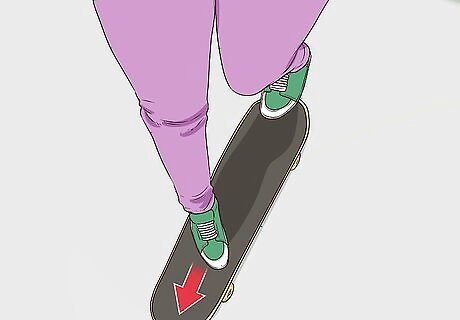
Turn one foot forward. To begin your footbrake, turn the toes of your front foot forward. You will want them to face the nose of the board for an ideal footbrake. Turn your upper body and head forward as you do so. It doesn't matter whether you use your left or right foot, but most people use their dominant foot.
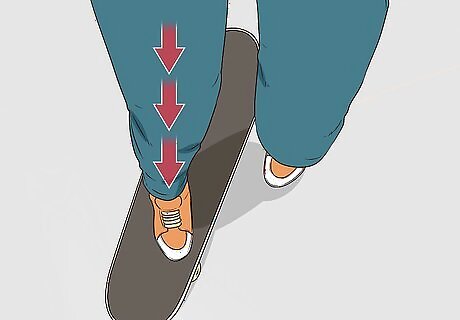
Transfer your weight to your front foot and bring your back foot down. When you feel steady on your front foot, let your back foot fall to the ground. Keep your back leg straight as you do so. Do not lean on your back foot, or you could fall off the skateboard. Try to touch the ground with your heel first.
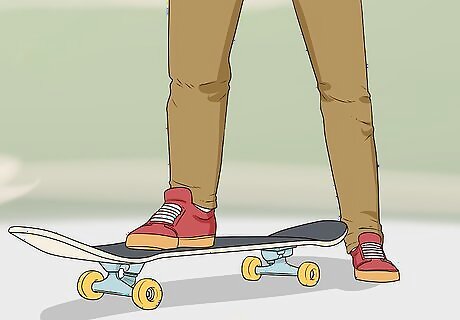
Let your back foot drag lightly across the ground. First, apply light pressure to the ground with your shoe as you come to a halt. Shift your weight slowly from the front to the back foot. If you want to slow down quickly, apply more pressure with your back foot. Apply even pressure with your foot for a smooth stop.
Controlled Slide Stopping
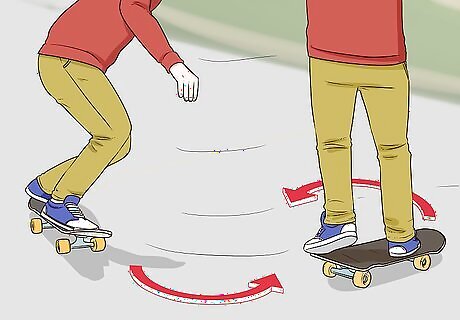
Do a controlled slide stop if you're braking downhill. Slide stops are ideal if you are going quickly downhill or need to brake fast. Use this move instead of jumping off your skateboard (which can cause injuries) unless you are in emergency situations. An example of when you'd use slide stopping: you are skating downhill and a car abruptly pulls out in front of you. Wear protective gear (such as knee pads and wrist guards) at all times in case you need to make an emergency slide stop.
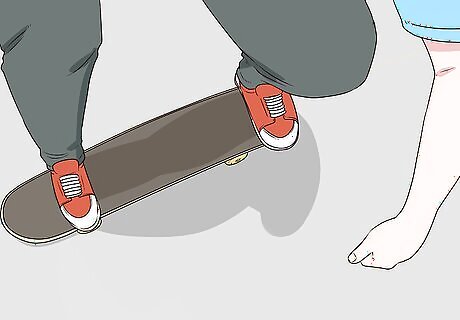
Place your front foot forward. Much like footbraking, move your front foot forward until it is facing the board's nose. If you know where your skateboard's front bolts are, position your foot directly above them.
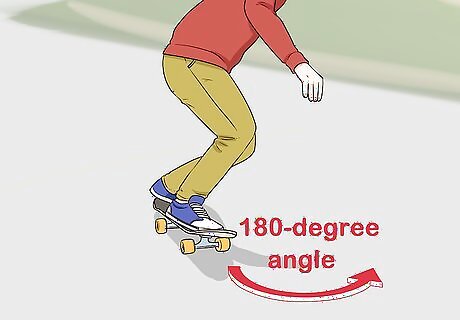
Turn your board at an 180-degree angle. Pivot with your upper body, and turn sharply to the side. Shift your weight to the side so you can accommodate the swift turn. As you're doing so, crouch to your knees and lean forward to prevent falling on your back. During this move, your feet will remain on the board at all times. Do not drag either foot on the ground.
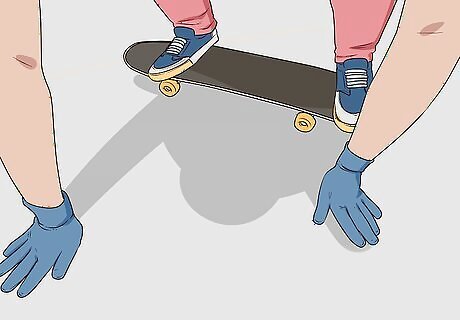
Place your hand on the road for stability. If you start to lean back, place your hand on the road and let it drag (similarly to your back foot while footbraking). Wear sliding gloves as you do so to avoid getting road burn on your palms. Let the board slide to a stop, and lift your hand back up when it has completely halted.
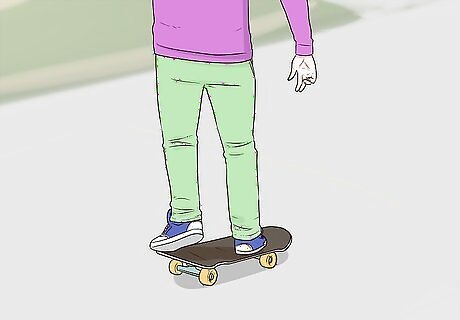
Practice before trying the real thing. Before you're in a situation where you need to brake while skating downhill, practice on a small incline. Your driveway or a gradually sloping sidewalk are both great places to start. Continue practicing until controlled slide stopping is in your muscle memory. Karl Watson Karl Watson, Professional Skateboarder Skating breaks down the race, language, gender, and age barriers that often divide us. When you're on a skateboard, you're just a skater, and that's all that matters.
Powersliding
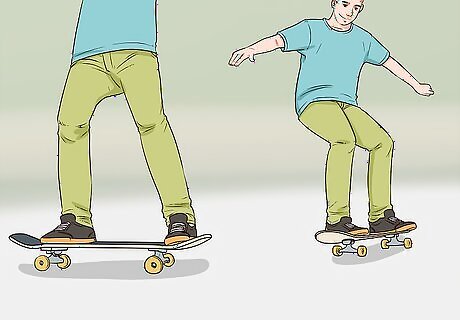
Powerslide if you're a confident skater. Powersliding is similar to controlled sliding, but it involves more advanced maneuvers. Do not perform powersliding as a go-to when you need to stop quickly. Instead, use it at skate parks or when practicing tricks with your friends. Look out for traffic anywhere near your skateboard before you powerslide. Powersliding is a tricky move and hard to stop abruptly.
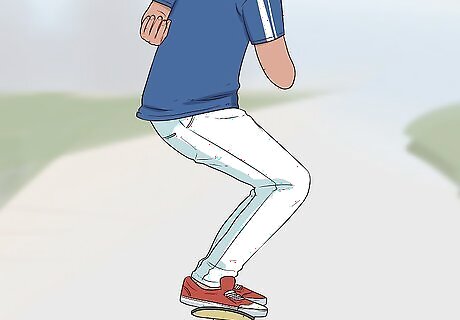
Shift your weight to your heels. As you do so, lean slightly to the front of the board. This will give your body full control of the powerslide and help you turn more fully. Concentrate most of your weight on your front heel, as leaning on your back heel will make this trick harder.
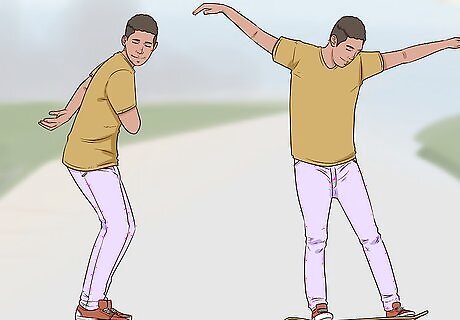
Turn your body in the direction of your slide. To make sure your upper and lower body moves, focus on turning your shoulders and hips. Use your front foot as a pivot as you slide at a 90-degree angle. Avoid moving too fast, which can cause you to lose balance.
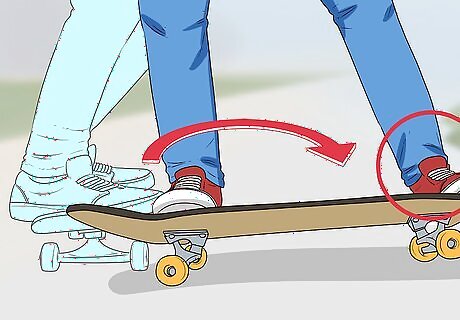
Kick out with your back foot. After you've pivoted with your front foot, kick out in the direction of your slide. This will complete your powerslide as you slowly come to a stop. Lean back until your board has stopped to keep from losing your balance.




















Comments
0 comment